Discover 11 hidden attractions, cool sights, and unusual things to do in Helena (United States). Don't miss out on these must-see attractions: Montana State Capitol, Cathedral of Saint Helena, and Mount Helena. Also, be sure to include Montana Governor's Residence in your itinerary.
Below, you can find the list of the most amazing places you should visit in Helena (Montana).
Table of Contents
Montana State Capitol
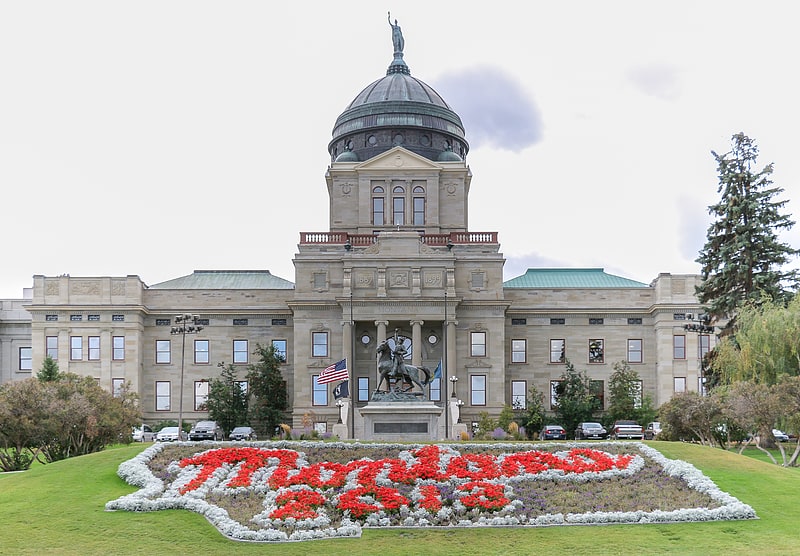
Government center with tours and a museum. The Montana State Capitol is the state capitol of the U.S. state of Montana that houses the Montana State Legislature which is located in the state capital of Helena at 1301 East Sixth Avenue. The building was constructed between 1896 and 1902 with wing-annexes added between 1909 and 1912.[1]
Address: Montana Ave. and 6th St, 59601 Helena
Cathedral of Saint Helena
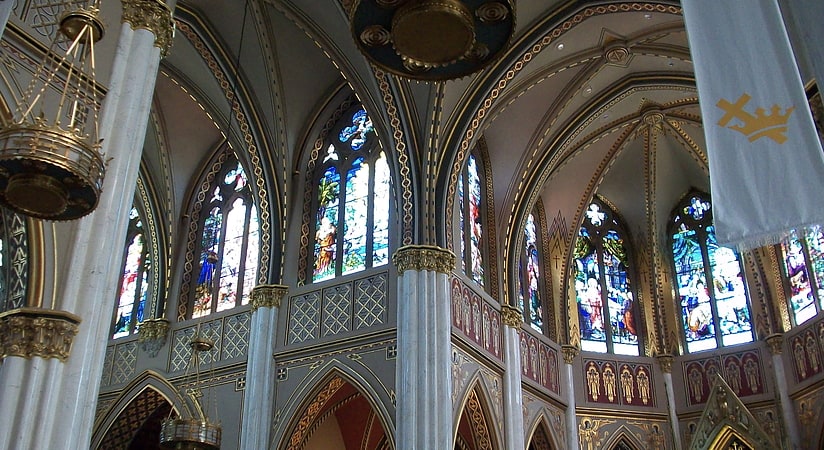
Grand, historic neo-Gothic church. The Cathedral of Saint Helena is the cathedral of the Roman Catholic Diocese of Helena, Montana. Modeled by architect A.O. Von Herbulis after the Votivkirche in Vienna, Austria, the construction began on the cathedral in 1908, and held its first mass in November 1914. Bishop John Patrick Carroll worked tirelessly to raise funds for building the cathedral and had an administrative role in management of the entire project. The cathedral sustained significant damage during the 1935 Helena earthquake, which required extensive renovations. The cathedral was added to the National Register of Historic Places in 1980.[2]
Address: 530 N Ewing St, 59601-4001 Helena
Mount Helena
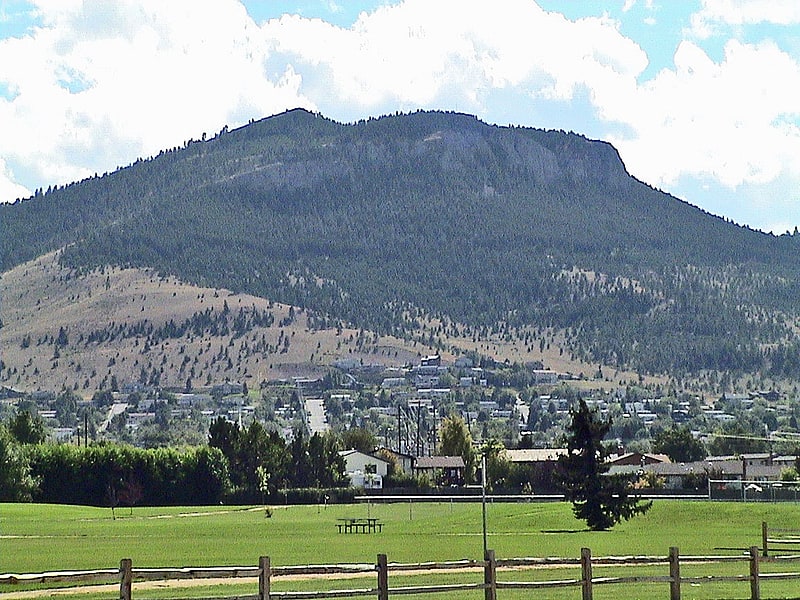
Park in the Lewis and Clark County, Montana. Mount Helena City Park is a 620-acre park in Helena, Montana. The park encompasses Mount Helena which rises 5,468 feet above sea level, overlooking the city of Helena 1,300 feet below. The park includes six trails up and around the mountain, some of which connect to other trails in nearby Helena National Forest. Other trails go to the cave nicknamed "Devil's Kitchen", to the big letter "H" on the side of the mountain overlooking the city, and to the summit of the mountain. The park is free of admission and is maintained by the City of Helena and local conservation and recreation groups from the Helena area. It was listed on the National Register of Historic Places in 1997.[3]
Montana Governor's Residence
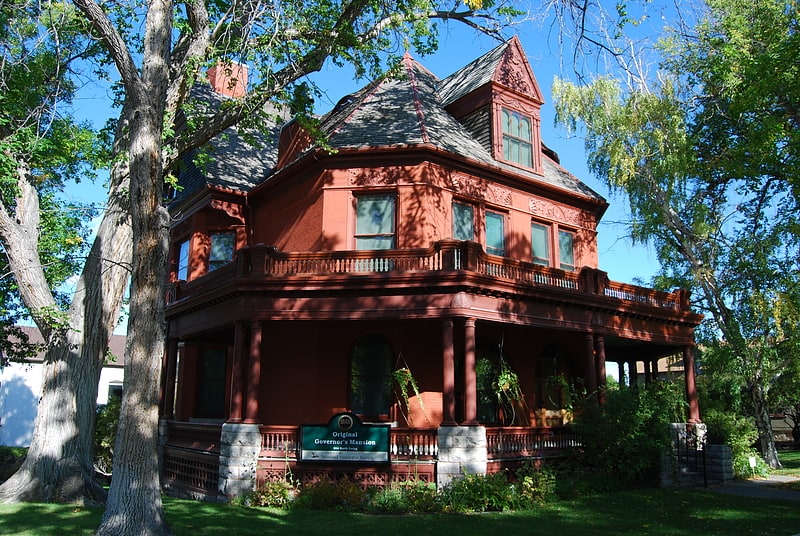
Historical place in Helena, Montana. The Former Montana Executive Mansion, also known as the Original Governor's Mansion, is a property in Helena, Montana, listed on the National Register of Historic Places in 1970.[4]
Address: 304 N Ewing St, 59601-4049 Helena
Home of Peace Cemetery
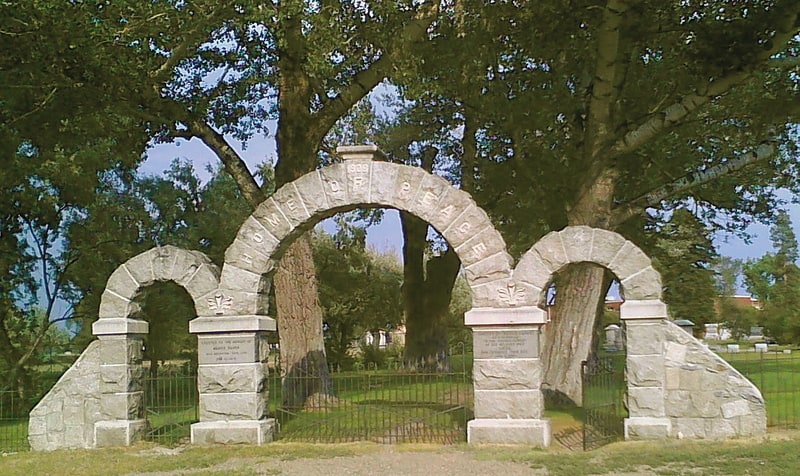
Cemetery in Helena, Montana. Home of Peace is a Jewish cemetery in Helena, Montana, founded in 1867 by the local Hebrew Benevolent Society, which formed on December 9, 1866. The Society formally purchased the land in 1875. The Home of Peace Cemetery Association now maintains the grounds. It is the oldest active cemetery in Helena and the oldest active European ethno-religious cemetery in Montana. There are three major sections of land owned by the Association: the cemetery, undeveloped adjacent land, and land leased to the Helena School District since 1975. The portion leased by the school district is a practice football field for Capital High School and contains unmarked graves from the earliest days of the cemetery. The original wrought iron fence erected in 1867 still stands except on the north side and is in disrepair in places. A granite gateway erected in 1910 is at the main entrance. The east gate also has granite markers. There is a water tower, pump house, and landscaping shed. Twelve broken tombstones lie at the base of the water tower. The northwest corner has remained undeveloped and in its natural wild state. In 1910 cottonwood trees were planted along the driveway.
Jewish immigrants arrived in Helena as early as 1864. Most of the Jewish immigrants to Helena had come from Germany or Prussia in the wake of the Montana Gold Rush. Most of them practiced Reform Judaism and worked as merchants, providing goods and services to the miners. As of November 2005, there are 204 tombstones and over 240 recorded burials in the cemetery. There are no markers remaining from the 1860s. The oldest remaining marker is that of Hattie Jacobs who died in 1873. Most markers are made from local sandstone or granite, a few of imported marble. Markers are found both lying down and standing upright. As the Jewish population of Helena peaked in 1900 with 138 adults, burials in the cemetery are no longer as frequent as they once were. When the cemetery first opened in 1867 it was well outside the city limits at that time. The first Jew known to have died in Helena was Emanuel Blum, who died on May 5, 1865. He was buried in the City Cemetery because there was no Hebrew Cemetery at the time. Blum also became the first burial in the Home of Peace cemetery as the HBS voted on December 5, 1867 to have Blum's body moved there. In 1916, in response to a request to allow non-Jewish spouses and their unmarried children to be buried in the cemetery, the Board also approved non-Jewish burials even if there was no connection to someone who was Jewish. Several of the Jews buried in the cemetery were Freemasons. In many cases, the cemetery plots were arranged by family groups. The Jewish population of Helena declined steadily over the years and there are now more Jewish people buried in this cemetery than there are living in Helena.[5]
Temple Emanu-El

Synagogue in Helena, Montana. Temple Emanu-El in Helena, Montana, United States, was the first Jewish synagogue to be constructed between St. Paul, Minnesota, and Portland, Oregon. It was completed in 1891. The once-thriving Jewish community of Helena declined to the point that by the 1930s they could no longer maintain the building, and it was sold to the State of Montana, which added a second floor, converted it to office space and removed most religious symbolism from the building, though kept the unique stained glass windows. Eventually, the building fell into disuse by the state other than storage space, and so it was purchased by the Catholic Diocese of Helena, which owns it today and uses it to house their administrative offices. While the Jewish communities of Montana have always been small, they have become more active and visible in recent decades. After the Helena diocese moved to new space in November 2021, the Montana Jewish Project has been given the opportunity to repurchase the building and create a center for Montana's Jewish community.[6]
Benton Avenue Cemetery
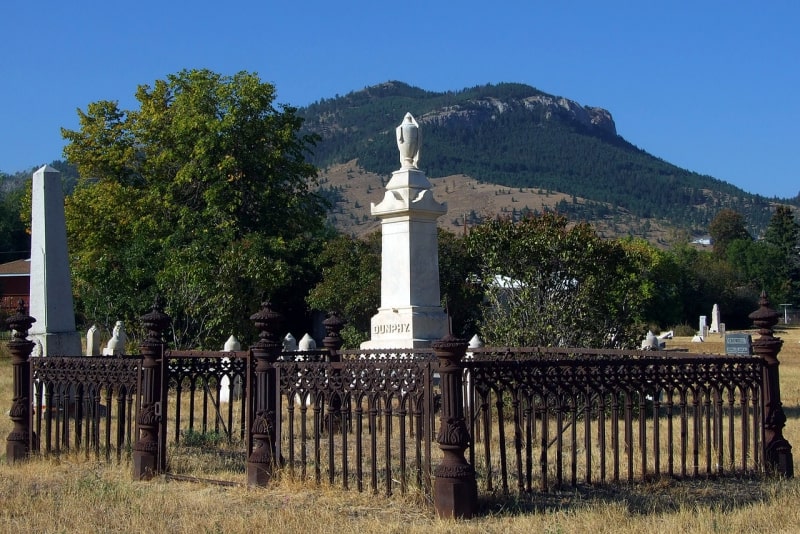
Cemetery in Helena, Montana. The Benton Avenue Cemetery located in Helena, Montana was established by the Lewis and Clark County commissioners in 1870, and run by the county until management was turned over to the Benton Avenue Cemetery Association in 1922. The City Cemetery was older than Benton, but that property had to be cleared in 1875 for construction of Central School, those graves reinterred at Benton. In 1883, the route of Helena's first Memorial Day parade ended with a ceremony at Benton Avenue Cemetery.
The cemetery was re-dedicated in 1968 following an extensive clean-up and restoration. In 1974, the cemetery was added to Montana's historic sites by the Governor's Commission on Historic Preservation, and was added to the National Register of Historic Places in 2003. At the time of the NRHP listing, there were an estimated 896 burials in the cemetery's 10 acres (4.0 ha). In keeping with historic preservation, the grounds are maintained in keeping with the original 19th century plant life that grew in the area. A wrought iron fence, with two unlocked pedestrian gates, and one locked automobile gate, surrounds the grounds. Within the cemetery, there are also fenced-off areas privately maintained by family members.[7]
Helena Civic Center
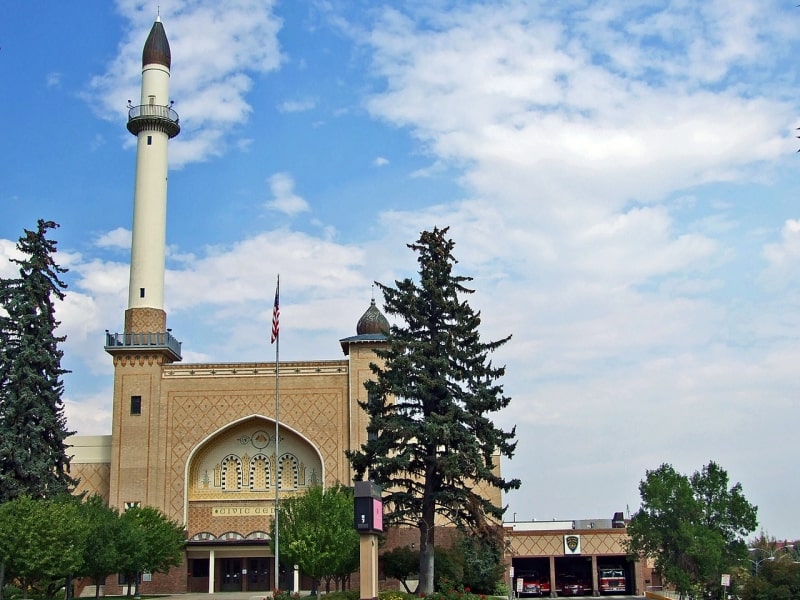
Civic center in Helena, Montana. The historic Algeria Shrine Temple, now also known as the Helena Civic Center, is a Moorish Revival building in Helena, Montana that was built in 1920. The building served as a meeting hall for the Algeria Shriners and had civic functions. It was listed on the National Register of Historic Places in 1988.
The National Register's database records "Historic subfunctions" that include "meeting hall" for the place. Today, the building has a 2,000-seat auditorium and a 15,000 sq. ft. ballroom/exhibition hall. As of 2012, it is owned and operated by the City of Helena and available for banquets, craft shows, dances, weddings, trade shows and conferences.[8]
Address: 340 Neill Ave, 59601-3334 Helena
Robert and Elizabeth Fisk House

The Robert and Elizabeth Fisk House is a historic home in Helena, Montana. Built in the mid 19th century by the Fisk family, the residence was added to the National Register of Historic Places in 2007.[9]
Montana Historical Society

History museum, Museum, Art gallery, Art museum
Address: 225 N Roberts St, 59620 Helena
St. Peter's Cathedral
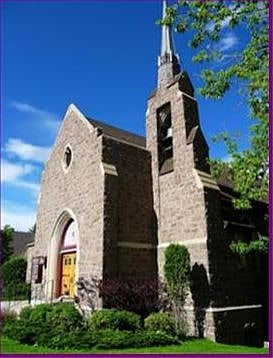
Episcopal church in Helena, Montana. St. Peter's Cathedral is located in Helena, Montana, United States. It is the seat of the Episcopal Diocese of Montana. In 1990 the cathedral was added as a contributing property in the Helena Historic District.[10]